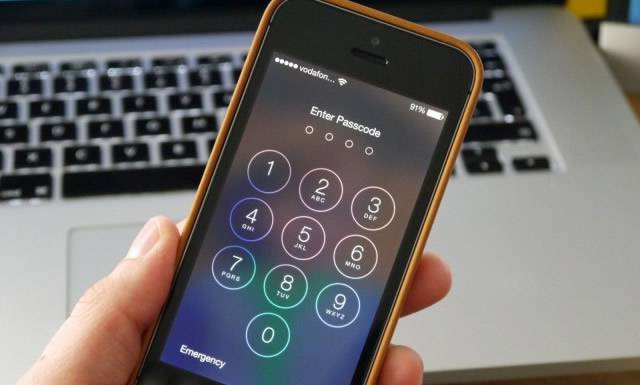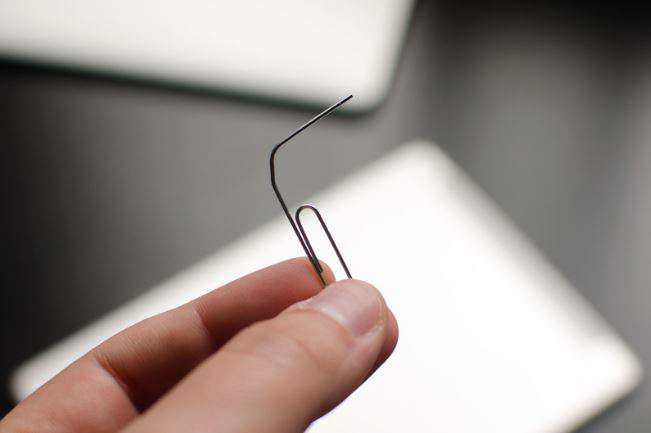Sharing Wi-Fi passwords between devices can be a hassle, especially if you have a complex password that’s difficult to remember. Fortunately, there are several methods to easily share your Wi-Fi password from your Macbook to your iPhone. In this blog post, we will explore four different methods that will allow you to quickly and effortlessly share your Wi-Fi password between these devices. Whether you’re at home, at the office, or at a friend’s place, these methods will come in handy and save you the trouble of manually typing in the password every time you want to connect.
Why You Need to Share Wifi Password from Macbook to iPhone
There are several reasons why sharing your Wi-Fi password from your Macbook to your iPhone can be beneficial.
1. Convenience: Sharing your password makes it easier for you to connect multiple devices to your Wi-Fi network without the need to manually input the password each time.
2. Secure and Complex Passwords: If you have a long and complex password for your Wi-Fi network, it can be challenging to remember and type it accurately into your iPhone. Sharing the password eliminates the risk of error during input.
3. Time-saving: By quickly sharing your Wi-Fi password, you can avoid the hassle of searching for the password, typing it in, and potentially making mistakes. It saves you time and gets you connected faster.
Now let’s dive into the various methods to share your Wi-Fi password from your Macbook to your iPhone.
Video Tutorial:
Part 1. Using AirDrop
AirDrop is a convenient feature available on Apple devices that allows you to share files, photos, and even Wi-Fi passwords with nearby devices. Here’s how you can use AirDrop to share your Wi-Fi password:
1. Ensure that both your Macbook and iPhone have Wi-Fi and Bluetooth enabled.
2. On your Macbook, go to ‘System Preferences’ and click on ‘Sharing’.
3. In the ‘Sharing’ menu, make sure that ‘Wi-Fi’ is selected in the list on the left.
4. On your iPhone, go to ‘Settings’, tap on Wi-Fi, and make sure it is turned on.
5. On both devices, make sure that AirDrop is enabled and set to “Contacts Only” or “Everyone”.
6. On your Macbook, click on the Wi-Fi icon in the menu bar and select the Wi-Fi network you want to share.
7. On your Macbook, click on the ‘Share Password’ button that appears next to the Wi-Fi network name.
8. A prompt will appear on your iPhone, asking if you want to accept the Wi-Fi password. Tap ‘Accept’ to connect.
Pros:
1. Quick and easy way to share Wi-Fi passwords.
2. No need to type the password manually, reducing the chances of errors.
3. Uses built-in features of Apple devices, so no additional apps or tools required.
Cons:
1. Requires both devices to have Wi-Fi and Bluetooth enabled.
2. Both devices need to be in close proximity for AirDrop to work effectively.
Part 2. Using iCloud Keychain
If you have iCloud Keychain enabled on your Macbook and iPhone, you can leverage this feature to automatically sync saved Wi-Fi passwords between devices. Here’s how:
1. Ensure that iCloud Keychain is enabled on both your Macbook and iPhone.
2. On your Macbook, go to ‘System Preferences’ and click on ‘Apple ID’.
3. In the ‘Apple ID’ menu, click on ‘iCloud’ in the sidebar.
4. Make sure that ‘Keychain’ is checked and enabled.
5. On your iPhone, go to ‘Settings’ and tap on your Apple ID at the top of the screen.
6. Tap on ‘iCloud’ and make sure that ‘Keychain’ is toggled on.
7. On your Macbook, connect to the Wi-Fi network you want to share.
8. The Wi-Fi password will be automatically stored in your iCloud Keychain.
9. On your iPhone, when you are near the Wi-Fi network, your device will automatically connect using the saved password.
Pros:
1. Seamless syncing of Wi-Fi passwords across devices.
2. No need to manually share or input the password.
3. Works in the background without any additional steps.
Cons:
1. Requires iCloud Keychain to be enabled on both devices.
2. Only works for Apple devices within the same iCloud account.
Part 3. Using 1Password
If you use a password manager like 1Password, you can take advantage of its capabilities to share your Wi-Fi password between your Macbook and iPhone. Here’s how:
1. Install the 1Password app on both your Macbook and iPhone.
2. On your Macbook, open 1Password and locate the Wi-Fi password you want to share.
3. Right-click on the Wi-Fi password and select ‘Share’.
4. Choose the ‘AirDrop’ option and select your iPhone from the list of nearby devices.
5. A prompt will appear on your iPhone, asking if you want to accept the Wi-Fi password. Tap ‘Accept’ to connect.
Pros:
1. Securely stores and shares passwords across devices.
2. Can store and share more than just Wi-Fi passwords.
3. Provides an extra layer of protection for your credentials.
Cons:
1. Requires a subscription or purchase of the 1Password app.
2. Requires installation and setup on both devices.
Part 4. Using QR Codes
QR codes offer a convenient way to share Wi-Fi passwords by simply scanning the code with your iPhone’s camera. Here’s how you can use QR codes to share your Wi-Fi password:
1. On your Macbook, open a web browser and search for a QR code generator.
2. Enter your Wi-Fi network name (SSID) and password into the generator.
3. Generate the QR code.
4. Save the QR code image to your Macbook’s desktop.
5. On your iPhone, open the Camera app.
6. Point the camera at the QR code generated on your Macbook.
7. A notification will appear on your iPhone, prompting you to connect to the Wi-Fi network.
Pros:
1. Quick and easy way to share Wi-Fi passwords.
2. Can be used by devices that do not have AirDrop or iCloud Keychain capabilities.
3. No need to type in the password manually.
Cons:
1. Requires a QR code generator tool or website.
2. Scanning QR codes may not be supported on older iPhone models.
What to Do If You Can’t Share Wifi Password from Macbook to iPhone
If you encounter any issues or are unable to share your Wi-Fi password from your Macbook to your iPhone using the methods mentioned above, here are three alternative solutions you can try:
1. Manually Enter the Password: Although it may take more time, you can manually enter the Wi-Fi password on your iPhone by going to ‘Settings’ > ‘Wi-Fi’ and selecting the network you want to connect to. Tap on the password field and type in the password manually.
2. Use a Password Manager: If you have a password manager app on both your Macbook and iPhone, you can manually copy the Wi-Fi password from your Macbook’s password manager and paste it into your iPhone’s password manager.
3. Reset Network Settings: If none of the above solutions work, you can try resetting the network settings on your iPhone. Go to ‘Settings’ > ‘General’ > ‘Reset’ > ‘Reset Network Settings’. Note that this will remove all saved Wi-Fi passwords and network settings on your iPhone, so you’ll need to reconnect to Wi-Fi networks and re-enter passwords.
Bonus Tips
Here are three bonus tips to enhance your Wi-Fi password sharing experience:
1. Use a Password Manager: Password managers not only securely store your passwords but also offer seamless sharing and syncing across devices. Consider using a password manager to simplify the process of sharing Wi-Fi passwords and enhance overall password management.
2. Create an Easy-to-Remember Wi-Fi Password: If sharing your Wi-Fi passwords becomes a frequent occurrence, consider creating a password that is easy to remember, yet secure. Using a passphrase or a combination of words and numbers can make it easier to manually input the password when needed.
3. Keep Your Wi-Fi Network Secure: While sharing Wi-Fi passwords can be convenient, it’s essential to ensure that your network remains secure. Regularly update your Wi-Fi network password and consider enabling additional security features like WPA2 encryption to protect your network from unauthorized access.
The Bottom Line
Sharing your Wi-Fi password from your Macbook to your iPhone can save you time and effort in connecting to Wi-Fi networks. In this blog post, we explored four different methods to achieve this: using AirDrop, iCloud Keychain, 1Password, and QR codes. Each method has its pros and cons, and you can choose the one that best suits your preferences and requirements. If you encounter any difficulties, we also provided alternative solutions and bonus tips to enhance your Wi-Fi password sharing experience. So, next time you find yourself needing to connect your iPhone to a Wi-Fi network, give one of these methods a try.
5 FAQs about Sharing Wifi Password from Macbook to iPhone
Q1: Can I share Wi-Fi passwords from my Macbook to other devices?
A: Yes, the methods mentioned in this blog post can also be used to share Wi-Fi passwords from your Macbook to other Apple devices like iPads or iPods, as long as they have the required features enabled.
Q2: Can I share Wi-Fi passwords between non-Apple devices using these methods?
A: No, the methods mentioned in this blog post are specifically tailored for sharing Wi-Fi passwords between Apple devices running macOS and iOS.
Q3: Are there any security concerns when sharing Wi-Fi passwords?
A: The methods mentioned in this blog post are designed to securely share Wi-Fi passwords between trusted devices. However, it is crucial to exercise caution and only share passwords with devices and individuals you trust.
Q4: Can I share Wi-Fi passwords if my Macbook and iPhone are not connected to the same iCloud account?
A: No, the iCloud Keychain and AirDrop methods mentioned in this blog post require both devices to be connected to the same iCloud account for seamless Wi-Fi password sharing.
Q5: Can I share Wi-Fi passwords with Android devices using these methods?
A: No, the methods mentioned in this blog post are specifically tailored for sharing Wi-Fi passwords between Apple devices. However, some Android devices may have similar features or apps that allow for easy Wi-Fi password sharing. Please refer to your device’s documentation or explore alternative methods specifically for Android devices.




